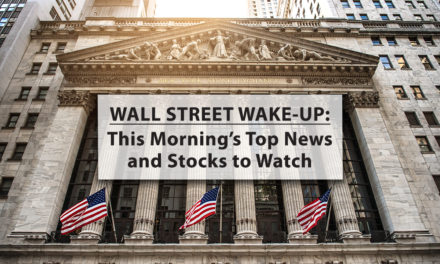Wharton School of Business professor of finance Jeremy Siegel said the market is currently overpriced but investors should expect 5% returns this year including inflation, and the biggest worry aside from the coronavirus outbreak is momentum players.
“If there was good news on this virus front, we would pop above 30,000 I think without question.”
“What I’m pointing out is that we are trading around 20 times … my estimate of this year’s earnings. That is not unreasonable in a low interest rate environment in today’s world, but it’s certainly not cheap,” Siegel explained on CNBC’s “Squawk Box.” “I also worry about momentum players. I think in the last two or three years we’ve had more and more momentum players jump onto trends, and that’s what I talked about in January. Now we had the virus come in and kind of interrupted it; now are we going to get back to that trend … I saw two years ago in 2018? Remember, we were straight up in January again. When people forget about valuations, the market could get too high.
“We’re not there yet but … this year I expect 5% to 10% total return. I’m a little bit down today on the opening but we were at 4 (percent) yesterday, so how much more was in the gas tank? That being said, we’re what, 2% away from 30,000. If there was good news on this virus front, we would pop above 30,000 I think without question.”
Siegel said investors should expect an average of 5% returns over the next five years after accounting for inflation.
“From a 20 times price-range ratio, you’d look for about a 5% return after inflation — if we have 2% inflation that gives us about a 7% return, I look at over the next five years on stocks. That’s about a 2% dividend and 5% capital gain. Year to year, we know there’s a lot of volatility that could be way up and down. But the 7% return is a little bit lower than long-term historical (returns) because we’re a little bit higher than the average valuations, but … where else are you going to go?” he said. “Treasury bonds are 1.5%, savings accounts are 1% or less. That’s still a very good return in today’s world, so less than long term but still pretty healthy for long-term investors.”
Looking even further into the future, Siegel said the Dow should double from 30,000 to 60,000 in about 14 years.
“We’ll eventually get there,” Siegel said. “I don’t think many people are worried about that long a horizon but let’s face it, those people, younger people today planning for their retirement, 30-year IRAs, you’re going to get 7% return in the long run at today’s levels. That’s something that still argues strongly for stocks in long-term portfolios in my opinion, without question. Plus the fact we’ve got to remember, dividend yields today are higher than bond yields on Treasurys. We’ve not had much of that experience in the last 50 years, but today they are and that’s another strong factor in favor of stocks.”
Of course, nothing is set in stone and a decade ago, no one considered we would go such a long period with interest rates being as low as they are, with the current president clamoring for negative interest rate policy (NIRP).
“I think the biggest surprise (around the world) is low interest rates. We’re beginning to understand them; they’re more than the central bank, they’re demographics and people saving and the Treasury bond has become a favorite hedge instrument against stock market risks, which means that risk portfolios and hedge fund managers are holding tons of it. So the demand is insatiable and I think we’re going to stay low for years. I don’t think we’re going to get Treasurys above 2 1/2% for years and I think that’s something investors are going to have to contend with.”




